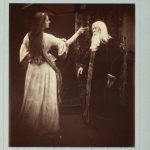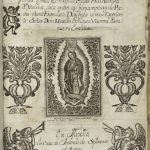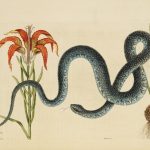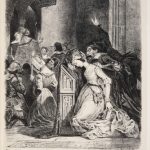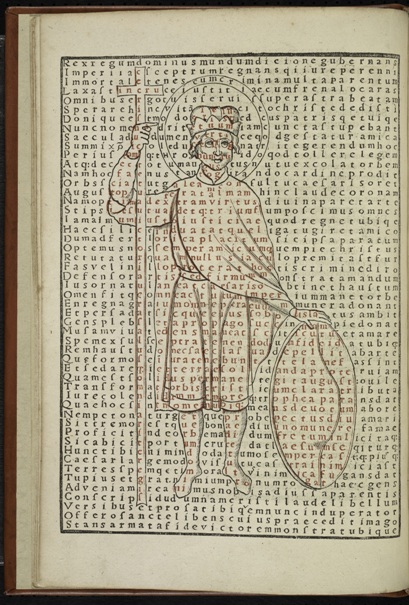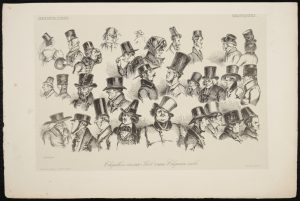If you didn’t have a chance to join us at Prof. Hillis’s lecture “From Alexandria to Google: The Mythic Quest for Universal Libraries”, tune into the “State of Things” podcast on “What is a Library in Today’s High Tech Tech Age?” Prof. Hillis is one of the respondents, covering some of the same ground he did at Wilson, but to give an historical perspective to the opening of NC State’s new James B. Hunt Library.
Category: News
Yucatec Maya Summer Institute
This past Wednesday, students from the Yucatec Maya Summer Institute visited Wilson Library to learn about the rich resources of the Stuart Collection in the Rare Book Collection.

Sponsored by the UNC-Duke Consortium, the Institute offers beginning, intermediate, and advanced level instruction of modern Yucatec Maya. The RBC’s Stuart Collection, gift of George Stuart (UNC Ph.D. 1975) and Melinda Stuart, supports the study of Maya archaeology, culture, and language, and the extensive Maya-related curriculum of UNC Chapel Hill.
Following the viewing of Stuart rarities, students had the chance to look at artists’ books made by the Taller Leñateros of Chiapas, Mexico – collected for UNC by Teresa Chapa, Librarian for Latin America, Iberia, Latina/o Studies.
 The Rare Book Collection is excited about all things Maya in 2012. It looks forward to partnering with UNC colleagues to present “13 Bak’tun: New Maya Perspectives in 2012,” October 25-26, a symposium on Maya civilization in recognition of the end of the current great cycle in the Maya Long Count calendar. Noted scholar Víctor Montejo will give the keynote address; there will be open classrooms, poetry readings, exhibitions, and more. Follow our web site for details to come in the next weeks.
The Rare Book Collection is excited about all things Maya in 2012. It looks forward to partnering with UNC colleagues to present “13 Bak’tun: New Maya Perspectives in 2012,” October 25-26, a symposium on Maya civilization in recognition of the end of the current great cycle in the Maya Long Count calendar. Noted scholar Víctor Montejo will give the keynote address; there will be open classrooms, poetry readings, exhibitions, and more. Follow our web site for details to come in the next weeks.
Feminists of the 17th Century
The Rare Book Collection is pleased to celebrate Women’s History Month by highlighting two recent acquisitions by notable female authors. It just so happened that last month, we were in the right place at the right time to acquire two exemplary works by women writers. Adding to the serendipity of it all is the fact that the books in question were published within a year of one another, in 1688 and 1689.

The earlier volume is Jane Barker’s Poetical Recreations: Consisting of Original Poems, Songs, Odes, &c. with Several New Translations (London, 1688). According to Kathryn King’s book Jane Barker, Exile: A Literary Career 1675-1725 (Oxford, 2000): “By any reckoning Jane Barker was a remarkable figure. A devoted Jacobite who followed the Stuarts into exile, a learned spinster who dabbled in commercial medicine, a novelist who wrote one of very few accounts of female same-sex desire in early modern Britain, she was also one of the most important women writers to enter the literary market-place during the Augustan period.” Poetical Recreations is her only volume of verse, and our particular copy of it is an appealing one, complete with the license leaf bearing the woodcut publisher’s device.
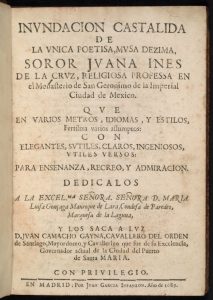
Our second acquisition was published the following year in Madrid and is nothing less than the first book of Sor Juana Inés de la Cruz, widely regarded today as the first published feminist of the New World. A child prodigy who was born in Mexico in the middle of the seventeenth century, Sor Juana has been lauded as the most outstanding writer of the Spanish American colonial period. In the twentieth century, scholars rediscovered her poetry, and she is now taught as part of the Baroque literary canon, including here at UNC Chapel Hill. Indeed, UNC’s Prof. Rosa Perelmuter is the author of two books on Sor Juana: Noche intelectual: la oscuridad idiomática en el Primero sueño (Mexico, 1982), and Los límites de la femineidad en Sor Juana Inés de la Cruz: estrategías retóricas y recepción literaria (Pamplona, 2004).
The volume that the Rare Book Collection has purchased is, quite wonderful to say, the first edition of Sor Juana’s first book, Inundación castálida de la única poetisa, musa dézima, Soror Juana Inés de la Cruz, religiosa professa en el Monasterio de San Gerónimo de la Imperial Ciudad de México (Madrid, 1689). This rare edition is truly a touchstone for those studying Spanish and New World literature, and we look forward to sharing it with students and scholars.
Both Inundación castálida and Barker’s Poetical Recreations build upon RBC’s strong holdings of women writers and give witness to the enormous literary contributions of women over the centuries.
Happy Birthday Charles Dickens!
February 7, 2012, is truly a hallowed date for the history of English literature, marking as it does, the 200th anniversary of the birth of the great writer Charles Dickens. We could not forget, because the RBC includes a wonderful Dickens collection, begun by donor William A. Whitaker (UNC A.B. 1904), as well as strong holdings of the graphic work of George Cruikshank, one of the most important illustrators of Dickens.
For our post, however, we choose not a picture but – quite aptly, we believe – an image of the opening chapter of David Copperfield, “I Am Born.”
Indeed, today we celebrate Dickens as the hero of his own life!
John Donne’s Devotions Upon Emergent Occasions
We are excited to report that we’ve acquired a very rare edition of John Donne’s famous Devotions upon Emergent Occasions, known best for containing the oft-quoted “No man is an island” and from whence Ernest Hemingway received inspiration for the title of his book, For Whom the Bell Tolls. Our copy is of the very uncommon fourth edition (1634) and is all the more rare because it includes the engraved title-page by William Marshal depicting Donne in his death shroud based on his marble effigy in St. Paul. The fourth edition is the first with this engraved title-page, which is often missing in other copies.
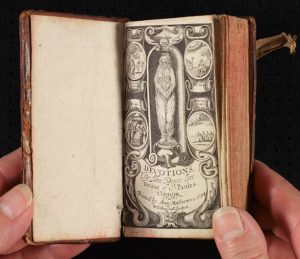
The passage containing Donne’s famous lines is found in Meditation XVII, ‘Nunc lento sonitu dicunt, Morieris’, the tolling of the passing bell:
No man is an Iland, intire of it selfe; every man is a piece of the Continent, a part of the Maine; if a Clod bee washed away by the Sea, Europe is the lesse, as well as if a Promontory were, as well as if a Mannor of thy Friends, or of thine owne were; Any mans death diminishes mee, because I am involved in Mankinde, and therefore never send to know for whom the Bell tolls, It tolls for thee.
We’ve Been Busy, But Now We’re Back!
We’ve been busy since we launched our Blog. The Print Council of America made its first visit ever to North Carolina at the end of May, and Wilson Library was the venue for the annual meeting. The Rare Book Collection mounted displays of its diverse graphic holdings. Caricature is back in vogue, as a presentation at the meeting indicated, and our Cruikshank, Grandville, and Leech materials were much appreciated. Our copy of Grandville’s Types modernes, from the famous Donaueschingen Library—and with original drawings—was a particular standout.
Also on view for the Print Council was the new exhibition Meaningful Marks: Image and Text and the History of the Book. Up through September 28, the show explores why authors, artists, editors, and publishers often join image with text, creating more complex composite texts. It features some of the Rare Book Collection’s most provocative illustrated books.

